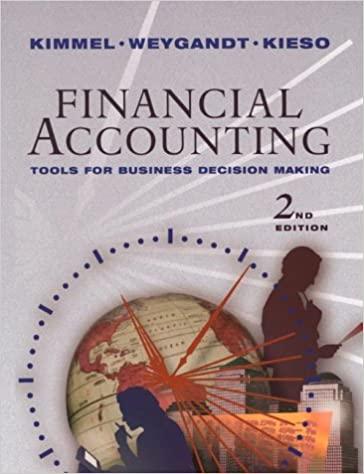Answered step by step
Verified Expert Solution
Question
1 Approved Answer
Pioli Corporation manufactures one product. It does not maintain any beginning or ending Work in Process inventories. The company uses a standard cost system in
Pioli Corporation manufactures one product. It does not maintain any beginning or ending Work in Process inventories. The company uses a standard cost system in which inventories are recorded at their standard costs and any variances are closed directly to Cost of Goods Sold. There is no variable manufacturing overhead. The standard cost card for the companys only product is as follows:
Inputs Standard Quantity or Hours Standard Price or Rate Standard Cost
Direct materials kilos $ per kilo $
Direct labor hours $ per hour
Fixed manufacturing overhead hours $ per hour
Total standard cost per unit $
The standard fixed manufacturing overhead rate was based on budgeted fixed manufacturing overhead of $ and budgeted activity of hours.
During the year, the company completed the following transactions:
Purchased kilos of raw material at a price of $ per kilo.
Used kilos of the raw material to produce units of work in process.
Assigned direct labor costs to work in process. The direct labor workers who were paid in cash worked hours at an average cost of $ per hour.
Applied fixed overhead to the units in work in process inventory using the predetermined overhead rate multiplied by the number of direct laborhours allowed. Actual fixed overhead costs for the year were $ Of this total, $ related to items such as insurance, utilities, and indirect labor salaries that were all paid in cash and $ related to depreciation of manufacturing equipment.
Transferred units from work in process to finished goods.
Sold for cash units to customers at a price of $ per unit.
Completed and transferred the standard cost associated with the units sold from finished goods to cost of goods sold.
Paid $ of selling and administrative expenses.
Closed all standard cost variances to cost of goods sold.
Required:
Compute all direct materials, direct labor, and fixed overhead variances for the year.
and Record the above transactions in the worksheet that appears below. Because of the width of the worksheet, it is in two parts. In your text, these two parts would be joined sidebyside to make one very wide worksheet. The beginning balances have been provided for each of the accounts, including the Property, Plant, and Equipment net account which is abbreviated as PP&E net and Determine the ending balance eg balance in each account.
Prepare an income statement for the year.Required:
Compute all direct materials, direct labor, and fixed overhead variances for the year.
and Record the above transactions in the worksheet that appears below. Because of the width of the worksheet, it is in two parts.
In your text, these two parts would be joined sidebyside to make one very wide worksheet. The beginning balances have been
provided for each of the accounts, including the Property. Plant, and Equipment net account which is aboreviated as PP&E net and
Determine the ending balance eg balance in each account.
Prepare an income statement for the year.
Complete this question by entering your answers in the tabs below.
Compute all direct materials, direct labor, and fixed overhead variances for the year. Input all your answers as a positive value. Round your answers to the nearest whole dollar amount.
Show lessa
S Ren

Step by Step Solution
There are 3 Steps involved in it
Step: 1

Get Instant Access to Expert-Tailored Solutions
See step-by-step solutions with expert insights and AI powered tools for academic success
Step: 2

Step: 3

Ace Your Homework with AI
Get the answers you need in no time with our AI-driven, step-by-step assistance
Get Started


